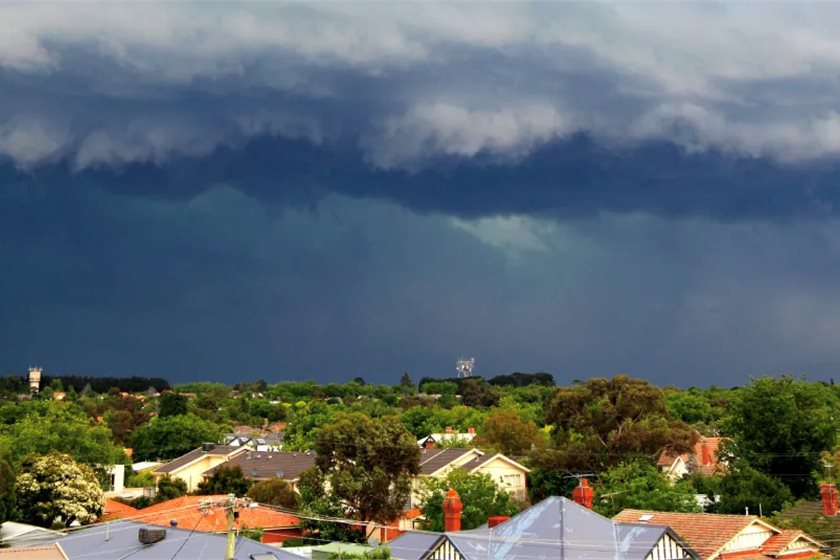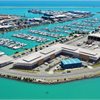Nearly half of Kiwi in the dark about risks facing their homes
22 Aug 2025

Media release – Tower | As weather events become more frequent and extreme its important people have information about the risks that could affect their property.
Tower unveils new research on attitudes to risk and resilience as it expands its risk-based pricing model and property risk ratings across New Zealand.
New research from Tower reveals that nearly half (46 percent) of Kiwi want more information about their property’s exposure to climate-related risks and natural disasters.
The findings also show that an overwhelming 86 percent of those surveyed believe it’s important to have information about their property’s risk profile.
The research ‘Weathering change: attitudes to climate risk and resilience in New Zealand’, has been released as Tower expands its risk-based pricing and public risk ratings tool to include landslide and sea surge risks. Tower was the first New Zealand insurer to introduce risk-based pricing for earthquakes in 2018, followed by inland flooding in 2021.
The move aims to bring greater transparency to how climate and natural hazard risks are reflected in Tower’s insurance premiums – and to help Kiwi better understand the risks their homes face.
Tower CEO Paul Johnston says, “As weather events become more frequent and extreme it’s important people have information about the risks that could affect their property.
“We want to help people become more resilient to the impacts of climate change and prepared for the future. Like most Kiwi, we believe people should only pay for the risks that apply to their homes, not someone else’s. Expanding our risk-based pricing model is a fair and transparent way to support this.”
According to the research, 70 percent of New Zealanders think it’s fair for insurance premiums to reflect each individual property’s risk, and 68 percent support higher premiums for homes more prone to weather or natural disaster damage.
“Insurance is vital for the personal and economic resilience of our communities. Tower’s evolution of risk-based pricing reflects New Zealand’s need to be more prepared. As a nation, we must focus our collective efforts on climate change adaptation, which is what will ultimately help keep insurance accessible and affordable in the long term,” says Johnston.
Tower’s risk-based pricing model uses detailed data and analytics to enable Tower to assess the likelihood an individual property will be impacted by a certain type of weather event or natural disaster and the estimated cost of repairing damage. It aims to remove cross-subsidisation so that customers only pay for the risks their homes face, not anyone else’s.
Tower is working with some of the world’s leading risk management and modelling companies to help calculate detailed risks specific to New Zealand addresses, including Moody’s for flood and earthquake risk-based pricing; Haskoning for sea surge risk-based pricing; and Swiss RE for landslide risk-based pricing.
When Tower launched flood risk-based pricing in 2021, around 90 percent of its home insurance customers received a reduction in the flood portion of their premium, at an average of around $25 per property.
With the addition of landslide and sea surge risk ratings, over 90% of Tower customers will now receive a reduction in the natural hazards portion of their premium, with average savings of $70 per property. Fewer than 10% of properties (those with higher sea surge or landslide risks) will see an increase in the natural hazards portion of their premiums, proportionate to their level of risk.
Tower will support customers with higher sea surge or landslide risk by smoothing annual increases over a period of up to four years.
Risk ratings for these hazards for individual residential addresses across New Zealand can be accessed by getting a quote from Tower online – https://my.tower.co.nz/quote/bundle-builder
FAQs
1. What is risk-based pricing and how does it work?
In the past, insurers have typically averaged the total risk of natural hazards across towns, cities or larger regions and spread this cost evenly among all policyholders.
Risk-based pricing is a fairer and more transparent way to price insurance. It aims to remove cross-subsidisation and so customers only pay for the risks they have, not someone else’s.
Through the risk-based pricing model, Tower assesses individual properties as having a very low, low, medium, high or very high rating for their home for earthquake, flood and now sea surge and landslide risks. These ratings reflect the possible risk of each natural hazard impacting that property and the estimated cost of replacing or repairing related damage.
The lower the risk of earthquake, flood, landslide and sea surge at that property, the lower these portions of the premium will be.
Community risk mitigation efforts – such as floodproofing, seawalls and levees and retaining structures – are factored into risk ratings and premiums. We will also take into account property-level mitigations when considering whether to offer insurance – we encourage customers to let us know about any mitigations they have in-place at their home.
Accurate risk selection and pricing are essential not only for maintaining continued support from global reinsurers, but also to help manage reinsurance costs which are ultimately included in customers’ premiums.
Risk-based pricing also helps to inform and educate customers and communities, which supports policyholders in their efforts to mitigate and adapt to risks. We also hope to encourage broader risk reduction efforts by sharing natural hazard risk insights with central and local government.
Anyone can see a property’s risk ratings by getting a house or landlord quote, whether they are a Tower customer or not.
If no risk data exists for one of the hazards at a specific address, community-level data is used to calculate your premium instead and the risk rating will display ‘unknown’. Our teams are available to assist customers who would like more information about their property.
2. When will landslide and sea surge risk-based pricing be introduced?
From August 2025, risk-based pricing for landslide and sea surge will be captured in premiums for new house policies.
Existing Tower customers will see risk ratings and risk-based pricing for landslide and sea surge incorporated into their premiums at their next renewal.
3. How has Tower’s risk-based pricing evolved?
Tower has continued to develop its approach to risk based pricing and underwriting (risk selection).
2018 – introduced risk-based pricing for earthquake risks.
2021 – introduced risk-based pricing for inland flooding, alongside a public facing tool sharing flood and earthquake risk ratings and associated premiums.
2023 – introduced automated risk selection* for sea surge risks within our quote process.
2024 – introduced automated risk selection* rules for landslide risks within our quote process.
2025 – Landslide and sea surge risk-based pricing introduced in August 2025. Customers can view landslide and sea surge risk ratings and see how this affects premiums for a property via our public facing tool, alongside flood and earthquake risks.
* Automated risk selection: during the quote process, customers are automatically informed when a property falls outside Tower’s risk appetite, and we are unable to offer insurance. Anyone seeking a quote for one of these properties is welcome to call us for a more tailored discussion.
4. How will customers’ premiums change as a result of the introduction of sea surge and landslide risk-based pricing?
More than 90 percent of Tower customers will see a reduction in the natural hazards portion of their premium as a result of these changes. Even if only one of the new hazard ratings is higher risk, the savings from the others can lead to a net positive outcome.
Approximately 97% of Tower customers are rated as very low risk for sea surge and around 96% are very low risk for landslide. Less than 1.5% of Tower customers are very high risk for sea surge and less than 0.5% are very high risk for landslide.
More than 90% percent of Tower customers will experience a reduction in the overall natural hazards portion of their premium, at an average of about $70 each a year.
Fewer than 10% of customers (those with higher sea surge or landslide risks) will see an increase in the natural hazards portion of their premiums, proportionate to their level of risk.
We will support customers who may face significant increases by smoothing annual increases over a period of up to four years.
We are directly communicating this change with customers, as well as engaging with external stakeholders to educate New Zealanders about risk-based pricing. Our team will personally contact our most affected customers.
5. How is risk data identified and compiled?
Tower is working with some of the world’s leading risk management and modelling companies to help calculate detailed risks specific to New Zealand addresses.
These partners are:
Moody’s for flood and earthquake risk-based pricing
Haskoning for sea surge risk-based pricing
Swiss RE for landslide risk-based pricing
This information is combined with a property’s construction details (where known) and Tower’s estimated rebuild or replacement costs. Any risk mitigation efforts undertaken by the homeowner – such as floodproofing, seawalls and levees, and retaining structures – are also factored into Tower’s risk-based pricing.
print this story










